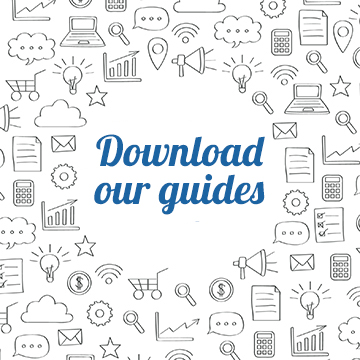I once spoke to an organisation that revealed it was sending more than 30 different email newsletters every month – all from different parts of the organisation, and all to the same, unsegmented database.
While this is an extreme example, business does have a love affair with email.
In 2017, 269 billion business and consumer emails were sent per day, according to market research firm the Radicati Group. This number is only expected to grow.
Content marketers use email sign up as a metric for marketing success. When you’ve managed to move someone from social platforms or third-party emails to your own lists they are on their way to becoming a loyal customer and brand advocate. And email marketing’s ROI is slightly ahead of SEO’s, according to research from Econsultancy in association with Adestra.
But if email recipients end up becoming inactive or unsubscribing, is the metric ‘email sign ups’ meaningful?
In the same way that it is easier to keep existing customers rather than win new ones, it is easier keep a subscriber than recruit one. And if you annoy someone to the point that they unsubscribe, they will not be coming back.
The top reason people unsubscribe is an organisation sending too many emails. To keep that list strong, engaged content marketers have to strike a balance between their business’s and audience’s needs.
This is where an email strategy is essential. What that strategy looks like depends on your audience and your goals. A B2B email strategy to nurture 10 high-value prospects will look completely different to a strategy designed to qualify 10,000 untested leads. But no matter your intentions, your strategy should consider every email type you send, including automated welcome messages, abandoned cart, incomplete account notifications and events promotion.
Make segmentation
One of the first steps when creating an email strategy is to look at your database and break the audience down into segments.
And segmentation can pay off. According to the Data & Marketing Association (DMA), email list segmentation and personalised emailing were the most effective email strategies last year. Mailmarkting.com also reckons segmented email campaigns get 14.31% more opens and 100.95% more clicks than non-segmented campaigns.
Campaign Monitor, on the other hand, says marketers have seen an increase of 760% in email revenue from segmented campaigns.
There are different ways to segment your audience. The simplest and most effective is customers and prospects. This avoids alienating customers on their way to becoming advocates by treating them as strangers, and ensures your prospects are nurtured towards becoming customers. Basic demographics like industry, company size or sales cycle stage are also strongly recommended.
And unless your business caters to a very niche audience, you may want to personalise further than this.
Can you narrow your audience down by the content they have engaged with on your site? Can you narrow them down by what they have purchased or are considering purchasing from you?
HBF’s Direct Advice 4 Dads audience is targeted by whether they are planning a pregnancy, they are expecting a child, they have a new baby or they have a toddler. And they are automatically moved from one stage to the next based on their child’s birth date – a clear example of the importance of collecting and maintaining the right data.
Looking at data on every customer segment can also help you work out where your priorities are. For a client using Email Direct Marketing (EDM) to drive registrations for an annual event, we targeted the audience segments that the previous year’s data showed contributed the most marketing pipeline and contract value per attendee. Within those high-value segments, we had 22 different personas, so we sent 22 different versions of the EDM.
Which brings us back to that company sending 30 EDMs a month – the problem wasn’t the volume; it was the lack of segmentation. No one person should receive 30 brand EDMs in a month (unless that brand’s EDM is adding value to the person’s life every single day), and a highly targeted newsletter means people are receiving information that interests them. No one is getting spammed.
You are going to have to test
 Your strategy should look at how often the audience should be communicated with and at what time. It should also look at the amount and type of content in each newsletter.
Your strategy should look at how often the audience should be communicated with and at what time. It should also look at the amount and type of content in each newsletter.
Email gives you layers of data. But to gather details about your audience you will likely have to do some testing.
Testing doesn’t have to be incredibly complex. You can really only test one thing at a time out of all the possibilities (send time, ‘from’ field, subject lines, preheader text, length, images, calls to action – the list is a long one), so best keep it simple. Most of the time, you’ll just be A/B testing – sending the exact EDM with one small change, like a blue Call To Action (CTA) button on one and a red one on the other, or different ‘from’ fields, and seeing which performs better.
If you were considering changing your send frequency, however, data will tell you a lot about whether people are opening and clicking through your existing emails. You might also like to talk to your audience as a starting point. Ask them whether they’d like to hear from you more, less, or just as often.
If you are sending a monthly newsletter and you find people are opening it quickly, clicking through to your content and spending a fair bit of time reading it, that might signify there is an appetite for more contact. You might bump your communication up to fortnightly. If the trend continued, you might increase the frequency and send weekly newsletters.
But, if you started sending twice as often and saw half the click throughs, it’s a sign you need to review your strategy.
Accept that change is inevitable
Your perfect plan may alter as your audience changes and grows. Email strategy is never about a set and forget approach. Always be looking at your results, and always be testing and refining.
Testing different frequencies for your emails is one way to respond to a decline in open rates. But it is not always that clear cut. If people stop opening your emails it could be because your subject lines aren’t working, your ‘from’ field needs some work, your preheader text is not appealing, you’re sending at the wrong time or your data isn’t clean.
On the other hand, if people are opening your emails but not clicking through, you may have a content problem, or your CTAs might need some love. If they’re clicking through and bouncing quickly, ensure your EDM is setting them up to expect the content they’re getting once they’re on your page. And go back to basics – make sure your content is relevant for your audience and test different CTAs.
With 269 billion emails floating about, you have to do the hard yards to be heard.
Related article
- Send again the same newsletter to those who haven't opened it?
- What is the best day and time to send the newsletter?
- What can you do to improve ROI for your email marketing campaigns?
- DEM optimisation with a Random Forest based approach
- Mother's Day Special Newsletter: our best advices
- A new data to analyze the performance of your newsletters: view click tracking
- Email Testing: Why it is important and What you Should Test
- 8 March is approaching fast: Create now your Women's Day Newsletters
- Newsletter and COVID: hints and tips
- Try the new feature Filters in sending phase
- How to choose the right Image for your Newsletters
- How identifying your buyer persona will help you create successful newsletters
- 10 Persuasive Marketing Techniques for Engaging Newsletters
- Black Friday 2019: How to Create a Successful Email Marketing Campaign?
- Why do some Emails go Undelivered?
- How a spam filter works
- Black Friday is coming! Here are some ideas for an engaging newsletter
- For this Christmas a tip worth 100
- 5 Fundamental Techniques for Building Your Contact Lists
- Email Marketing Campaign in China
- How to create a perfect Call To Action for your emails
- Direct marketing: what it is and how it works
- Your campaigns are going to spam folders?
- Newsletter for Internal Corporate Communication: 5 Practical Tips
- How to send a Spam-proof Email!
- Are Email, Newsletter and DEM the same thing?
- Why do you need to send newsletters to your company's customers?


